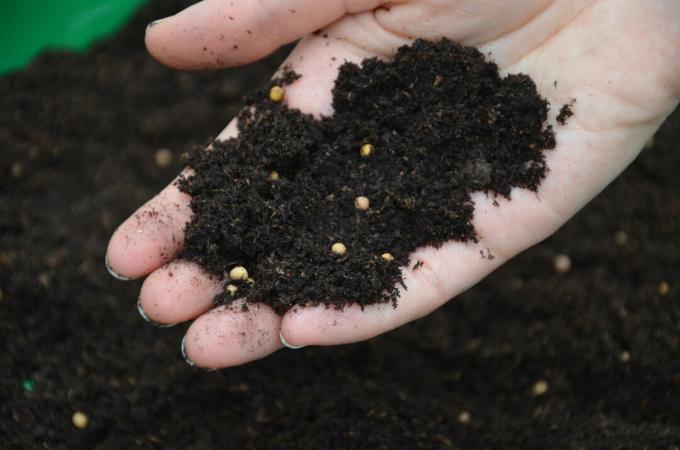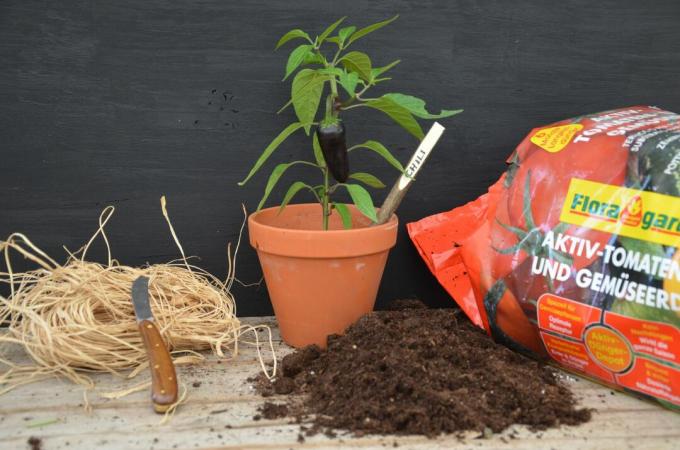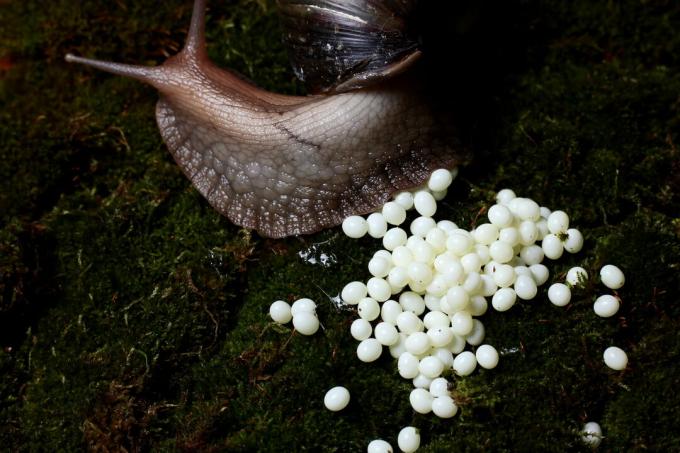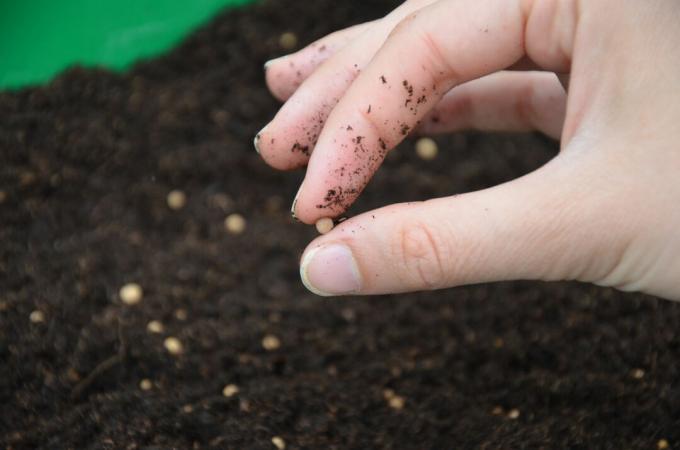Snail eggs or just small stones? What are the little globules in the potting soil really? We clear up the riddle.

Oh dear - you open a new pack of potting soil and suddenly little yellow balls look at you. But what is that? But not a home delivery of fresh eggs from Snailswho will soon become voracious vegetable destroyers? Don't worry, of course this is not a free pest delivery. The small spheres are depot fertilizers that do not damage your plants, but actually help them. After all, it supplies the plants with nutrients for several months - without you even noticing anything.
Depot fertilizer: nutrients out of nowhere?
Depot fertilizers provide our plants with nutrients over a long period of time. The small spheres are actually nutrient salts that are covered with a coating of synthetic resin (coated) will. This cover first protects the nutrient salts from water so that they are not washed out within a few days. But how do the nutrients get to the plant at all? This secret is also in the shell. This has innumerable small micropores through which water can penetrate into the interior of the spheres as steam. The nutrients inside are thereby dissolved. Gradually, the nutrient solution gets outside into the plant substrate via the permeable resin coating. Due to the small size of the pores, however, the water takes significantly longer to wash the nutrient salts out of the synthetic resin shell: This results in a uniform surface The nutrients are released and, as if by magic, the plant is continuously supplied with nutrients over a longer period of time - you just have to have them regularly to water.
Another advantage of many depot fertilizers is that the nutrients are released depending on the temperature. Since the extent of plant growth is also temperature-dependent, it comes in handy when the release of depot fertilizers also increases with rising temperatures. However, that can also have its limits: at some point, excessive heat will cause problems for the plants. If the nutrient release of the depot fertilizer is purely temperature-dependent, this can lead to salinisation of the substrate and consequent lasting damage to the plants. Nobody wants that, which is why there are depot fertilizers that do not have the above, especially at high temperatures Shoot out the optimal range of nutrient release and thus preventively counteract damage to plants.

But there are not only yellow-whitish grains: In some potting soil there are also red, green or blue balls. These globules are also depot fertilizers. But then why the bright colors? This is not about a fashionable appearance or a joke - the colored sheath is intended as a guide for manufacturers and gardeners and shows how long the fertilizer has a depot effect persists. This is because this is extremely different: The small balls can reliably supply your plants with nutrients between two months and over a year. It is of course decisive how long the plants to be fertilized will last:
- Container plants with a lifespan of several years:
Use depot fertilizer with a long release period - Seasonal goods such as bedding and balcony plants:
Mix depot fertilizer into the substrate with a release period of approximately 4 to 5 months

Test: snail eggs or depot fertilizer?
Especially if the flowers have been outside in the pot for a long time, it can also happen that the earth also provides a home for the offspring of snails. But how do I distinguish whether depot fertilizer or snail eggs share the space with my flower? The test is very easy: just take the suspicious ball between two fingers and crush it. With a depot fertilizer ball you will hear a cracking sound as the synthetic resin shell breaks. In addition, the ball fills dry even after being crushed. Snail eggs, on the other hand, do not have a solid shell and therefore do not make any noise. Furthermore, they feel slippery and damp between the fingers. So if it is difficult to see with the naked eye whether it is a friend or foe, it becomes clear to the layman at the latest with a simple finger test. Furthermore, the eggs of the snail are usually never found alone, but rather lie together in several. The depot fertilizer, on the other hand, should be distributed as evenly as possible in the substrate used, so that it is more of a coincidence if two depot fertilizer pellets are to be found next to each other.

How to distinguish depot fertilizer from snail eggs:
- Depot fertilizer pellets are ...
- covered with a synthetic resin that cracks characteristically when crushed between the fingers.
- usually found individually and well distributed in the substrate.
- Snail eggs are ...
- not covered with a solid cover.
- slippery and damp.
- usually found in a clutch of several eggs on one spot.

Various properties are crucial for high-quality potting soil. In our special article we reveal why high-quality soil is worthwhile.

